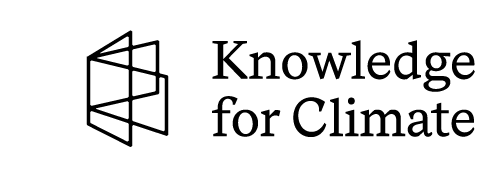Case Study Guttannen
Target group
Undergraduate students (MSc level), graduate students, early career professionals
Learning objectives
- Be familiar with the concept of joint knowledge production in climate change adaptation
- Increase knowledge on the environmental, social and ethical context of Guttannen and the factors that influence risks and risk perceptions
- Appreciate the extent that different perspectives from natural science, anthropology and ethics are relevant in the design and appraisal of climate change adaptation measures.
Introduction
Perspective Analysis
Joint Synthesis
General Description
Guttannen is a municipality with a small village (also named Guttannen) in the Grimsel region of the Bernese Alps in Switzerland. It has a very large territory by Swiss standards (200 km2) but consists mainly of rock and glacier areas. Only 10% of the area is usable in agriculture or forestry. The village, located in the Aare river valley at 1057 m a.s.l., is built very compactly. Most of the houses are very close to each other. The village has about 280 inhabitants, approximately 60-70% of whom are over 50 years old. In 2019, 14 school-aged children lived in the village. In the past, many inhabitants worked in agriculture, forestry, and the nearby power plant. Today, only 12 farmers are left. The village is permanently settled throughout the year. In summer, Guttannen is a destination for hiking tourists and many vehicles pass the village on the mountain pass road every day (most without stopping in the village). In winter, the mountain pass is closed due to the snow and the village is only reachable from the valley side. A major problem of the village is the out migration due to limited opportunities, as a there are only very few young families with small children.
As any other Alpine valley, the Guttannen – Grimsel area is prone to various mass movements, including rock fall, debris flows, snow avalanches, and rainfall triggered floods. Settlements, infrastructures, land use and road connections in the Grimsel area are all heavily exposed to hydrological (floods) and gravitational (landslides, debris flows) hazards. Permafrost thawing, glacier retreat and changing precipitation due to climate change are expected to enhance hazard exposure in the area. In the last fifteen years, however, Guttannen has attracted attention due to the magnitude and frequency of debris flows. These mass movements increased the sediment load brought into the Aare river system, changing the course of the river and causing damages to residential buildings and transport and energy infrastructure. Critical infrastructures such as a tunnel of the main highway and the transnational gas pipeline were heavily damaged by debris flows in 2009 and 2010; traffic and transport of gas had to be temporarily suspended. Later on, the pipeline had to be redirected by cost-intensive heavy construction works. Different adaptation options have been evaluated in the past years for the rest of the residential areas as well as for important infrastructure such as the cantonal road or water sewage plant. In terms of measures taken so far in response to the changed conditions of flooding, one inhabited house had to be abandoned. Furthermore, an early warning system and a monitoring system have been installed to protect the residential areas and critical infrastructures.
Questions
1) What are the risks that the community of Guttannen is/will be facing?
2) How can the community respond to these risks?
3) Which responses do you consider to be most appropriate?
Perspective 1 – Natural Science
Lecturer Veruska Muccione and Christian Huggel
In this perspective, students will learn about the natural science and economic aspect of the case study Guttannen. This pespective focuses on three aspects: 1) hazards and physical processes, 2) damage potential (exposure, vulnerability), and 3) adaptation options.
Learning objectives
- To be familiar the natural science and economic aspects of the case study Guttannen
- To understand the interconnections between risks and adaptation responses in Guttannen
- To have a clear understanding of the group work and a vision for the output of the assignment
Overview
Background Material
Perspective 2 – Social Science
Lecturer Christine Jurt
In this perspective, students will gain an insight into the risk perceptions of the local population of Guttannen and its importance for adaptation to climate change. The perspective follows an anthropological approach, using theoretical concepts and methodologies of the qualitative social sciences.
Learning objectives
- To explain the concept of risk in an everyday language and its context.
- To indicate different types of knowledge.
- To understand the heterogeneity of local people in terms of risk perceptions.
- To discuss the importance of risk networks and the role of risk perceptions for the development of adaptation strategies.
- To identify risks and their interrelations.
- To derive and visualize risk networks including the weight given to the risks and their links in between them.
- To present risk networks with their respective arguments concerning risk perceptions.
- To compare risk perception networks and to figure out crucial similarities and differences
Overview
Background Material
Perspective 3 – Ethics
Lecturer Ivo Wallimann-Helmer
In this perspective, students will learn to conduct an ethical case analysis in Guttannen using the case assessment grid developed be the UniFR_ESH Institute employing a principlist approach to ethical analysis and evaluation.
Learning objectives
- Know how principlism as an ethical tool works for ethical case assessment Be familiar with the ethical conflicts and challenges involved in the case study Guttannen
- To understand how different circumstances and risks can lead to various ethical questions and concerns.
Overview
Background Material
Students’ Synthesis
Using a set of integrative questions as a guideline, students work again in groups to synthesize the work across all perspectives of the cases.
Lecturers’ Synthesis
Lecturers reflect on the work produced, the methods employed, the learning experiences, the challenges, etc. in relation to JKP.
Evaluation
The students will follow up on the ‘lecturers’ synthesis’
